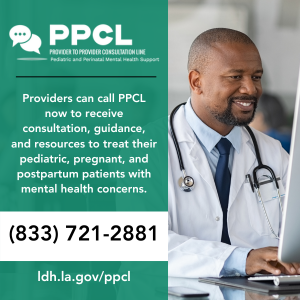In the increasingly fragmented world of health care, one thing remains constant: family physicians are dedicated to treating the whole person. Family medicine's cornerstone is an ongoing, personal patient-physician relationship focusing on integrated care.
Unlike other specialties that are limited to a particular organ or disease, family medicine integrates care for patients of both genders and every age, and advocates for the patient in a complex health care system.
The LAFP represents 1,600 physicians and student members statewide. It is the only medical society devoted solely to primary care. Approximately one in four of all office visits are made to family physicians. That is 214 million office visits each year– nearly 74 million more than the next largest medical specialty.
The specialty of family medicine was created in 1969 to fulfill the generalist function in medicine, which suffered with the growth of subspecialization after World War II. Since its creation, the specialty has delivered on its promise to reverse the decline of general medicine and provide personal, front-line medical care to people of all socioeconomic strata and in all regions of the United States.
Today, family physicians provide the majority of care for America’s underserved rural and urban populations. In fact, family physicians are distributed more proportionally to the U.S. population than any other physician specialty. Without family physicians, rural and underserved populations, in particular, would lack access to primary care.
Because of their extensive training, family physicians are the only specialists qualified to treat most ailments and provide comprehensive health care for people of all ages– from newborns to seniors. Like other medical specialists, family physicians complete a three-year residency program after graduating from medical school.
As part of their residency, they participate in integrated inpatient and outpatient learning and receive training in six major medical areas: pediatrics, obstetrics and gynecology, internal medicine, psychiatry and neurology, surgery, and community medicine. They also receive instruction in many other areas including geriatrics, emergency medicine, ophthalmology, radiology, orthopedics, otolaryngology, and urology.
Family physicians deliver a range of acute, chronic, and preventive medical care services while providing patients with a patient-centered medical home.
In addition to diagnosing and treating illness, they also provide preventive care, including routine checkups, health-risk assessments, immunization and screening tests, and personalized counseling on maintaining a healthy lifestyle. Family physicians also manage chronic illness, often coordinating care provided by other subspecialists. From heart disease, stroke and hypertension, to diabetes, cancer, and asthma, family physicians provide ongoing, personal care for the nation’s most serious health problems.


